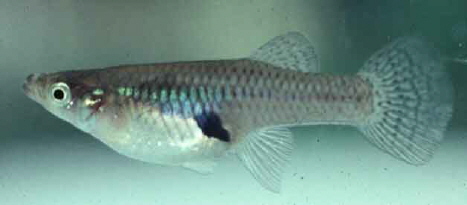Facts About Mosquitofish
The western mosquitofish, commonly referred to simply as mosquitofish and scientifically known as Gambusia, is a small freshwater fish with a significant role in controlling mosquito populations. These diminutive fish primarily feed on mosquito larvae but also consume zooplankton, insects, and other small invertebrates.
Due to their predilection for mosquito larvae, mosquitofish have been introduced into various ecosystems worldwide to help reduce mosquito numbers. However, this practice has sometimes adversely impacted native species and local ecosystems, as mosquitofish can be quite disruptive.
An interesting aspect of mosquitofish is their reproductive method. Unlike many fish that lay eggs, mosquitofish give birth to live young. A female can produce up to 60 offspring at a time. In terms of size, females can grow up to 7 cm long, while males are slightly smaller, typically reaching about 4 cm. The size difference and other physical traits make it relatively easy to distinguish between males and females.
Mosquitofish are remarkably resilient and can adapt to a broad range of environmental conditions, explaining their presence in diverse freshwater habitats. Their effectiveness in controlling mosquito-borne diseases has been varied, with both successful outcomes and cases where they have posed problems for native species.
Despite their potential drawbacks, mosquitofish have been utilized for mosquito control in regions such as South America and parts of the United States. Factors like temperature and available resources can influence their growth, reproduction, and development.

 Belize
Belize